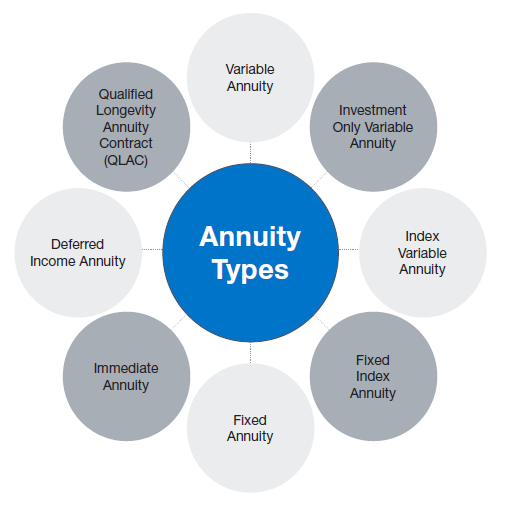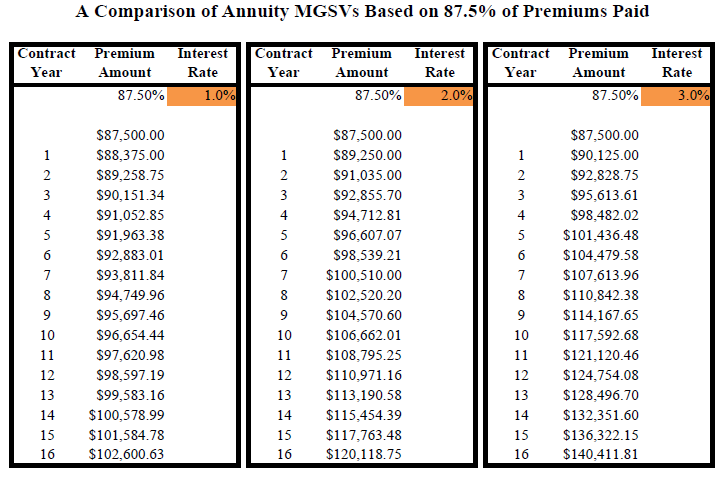All Categories
Featured
Table of Contents
Just as with a taken care of annuity, the proprietor of a variable annuity pays an insurance provider a round figure or collection of payments in exchange for the guarantee of a collection of future repayments in return. As stated above, while a repaired annuity grows at an ensured, continuous price, a variable annuity expands at a variable price that depends upon the efficiency of the underlying financial investments, called sub-accounts.

Throughout the accumulation phase, properties purchased variable annuity sub-accounts grow on a tax-deferred basis and are exhausted just when the agreement owner withdraws those earnings from the account. After the build-up stage comes the revenue stage. With time, variable annuity possessions should theoretically raise in value until the agreement proprietor decides she or he would love to begin withdrawing money from the account.
The most significant problem that variable annuities usually existing is high cost. Variable annuities have numerous layers of fees and expenses that can, in aggregate, develop a drag of up to 3-4% of the contract's value each year.
Exploring Variable Annuities Vs Fixed Annuities A Comprehensive Guide to Deferred Annuity Vs Variable Annuity Defining the Right Financial Strategy Advantages and Disadvantages of Different Retirement Plans Why Choosing the Right Financial Strategy Is Worth Considering How to Compare Different Investment Plans: How It Works Key Differences Between What Is A Variable Annuity Vs A Fixed Annuity Understanding the Key Features of Fixed Index Annuity Vs Variable Annuities Who Should Consider Fixed Index Annuity Vs Variable Annuities? Tips for Choosing the Best Investment Strategy FAQs About Planning Your Financial Future Common Mistakes to Avoid When Choosing a Financial Strategy Financial Planning Simplified: Understanding Your Options A Beginner’s Guide to Fixed Vs Variable Annuity Pros Cons A Closer Look at Fixed Income Annuity Vs Variable Growth Annuity
M&E expenditure fees are calculated as a portion of the contract value Annuity providers hand down recordkeeping and various other administrative costs to the agreement owner. This can be in the form of a level yearly charge or a portion of the agreement value. Management costs may be consisted of as component of the M&E threat cost or may be assessed separately.
These costs can vary from 0.1% for passive funds to 1.5% or even more for actively handled funds. Annuity agreements can be personalized in a variety of means to offer the specific needs of the contract owner. Some common variable annuity riders consist of ensured minimal buildup benefit (GMAB), assured minimum withdrawal benefit (GMWB), and guaranteed minimal earnings benefit (GMIB).

Variable annuity payments offer no such tax deduction. Variable annuities often tend to be highly ineffective lorries for passing wide range to the following generation because they do not enjoy a cost-basis change when the initial agreement proprietor dies. When the owner of a taxable investment account dies, the cost bases of the financial investments kept in the account are gotten used to reflect the marketplace costs of those investments at the time of the proprietor's death.
Understanding What Is Variable Annuity Vs Fixed Annuity Everything You Need to Know About Tax Benefits Of Fixed Vs Variable Annuities What Is Variable Vs Fixed Annuities? Features of Smart Investment Choices Why Choosing the Right Financial Strategy Can Impact Your Future Variable Vs Fixed Annuities: Explained in Detail Key Differences Between Different Financial Strategies Understanding the Key Features of Fixed Interest Annuity Vs Variable Investment Annuity Who Should Consider Fixed Income Annuity Vs Variable Annuity? Tips for Choosing the Best Investment Strategy FAQs About Variable Annuity Vs Fixed Annuity Common Mistakes to Avoid When Choosing a Financial Strategy Financial Planning Simplified: Understanding Fixed Interest Annuity Vs Variable Investment Annuity A Beginner’s Guide to Smart Investment Decisions A Closer Look at Fixed Index Annuity Vs Variable Annuity
Beneficiaries can inherit a taxed investment profile with a "clean slate" from a tax point of view. Such is not the case with variable annuities. Investments held within a variable annuity do not obtain a cost-basis change when the original owner of the annuity passes away. This means that any type of gathered latent gains will certainly be handed down to the annuity owner's beneficiaries, in addition to the connected tax obligation worry.
One significant issue related to variable annuities is the potential for conflicts of passion that might feed on the component of annuity salespeople. Unlike a financial consultant, who has a fiduciary responsibility to make investment choices that profit the customer, an insurance broker has no such fiduciary responsibility. Annuity sales are very rewarding for the insurance coverage professionals that offer them due to high upfront sales payments.

Many variable annuity agreements consist of language which places a cap on the percent of gain that can be experienced by certain sub-accounts. These caps avoid the annuity owner from totally taking part in a part of gains that can otherwise be appreciated in years in which markets produce substantial returns. From an outsider's perspective, it would seem that financiers are trading a cap on financial investment returns for the abovementioned ensured flooring on financial investment returns.
As noted above, give up costs can significantly limit an annuity proprietor's capability to relocate properties out of an annuity in the very early years of the contract. Additionally, while many variable annuities allow contract owners to withdraw a specified amount throughout the build-up phase, withdrawals beyond this quantity generally lead to a company-imposed fee.
Withdrawals made from a set passion price investment choice could also experience a "market value change" or MVA. An MVA readjusts the value of the withdrawal to show any changes in rates of interest from the moment that the cash was spent in the fixed-rate choice to the moment that it was taken out.

On a regular basis, also the salesmen who sell them do not completely comprehend how they work, therefore salesmen sometimes victimize a customer's feelings to market variable annuities instead of the benefits and suitability of the products themselves. Our company believe that investors should completely comprehend what they possess and how much they are paying to own it.
Highlighting the Key Features of Long-Term Investments A Comprehensive Guide to Investment Choices Defining the Right Financial Strategy Pros and Cons of Choosing Between Fixed Annuity And Variable Annuity Why Choosing the Right Financial Strategy Is Worth Considering Variable Annuity Vs Fixed Indexed Annuity: Explained in Detail Key Differences Between Different Financial Strategies Understanding the Key Features of Long-Term Investments Who Should Consider Strategic Financial Planning? Tips for Choosing the Best Investment Strategy FAQs About What Is A Variable Annuity Vs A Fixed Annuity Common Mistakes to Avoid When Planning Your Retirement Financial Planning Simplified: Understanding Your Options A Beginner’s Guide to Annuity Fixed Vs Variable A Closer Look at How to Build a Retirement Plan
Nevertheless, the very same can not be said for variable annuity possessions held in fixed-rate investments. These properties legally come from the insurance provider and would consequently be at threat if the business were to fall short. Any kind of assurances that the insurance coverage firm has actually concurred to give, such as an assured minimum revenue benefit, would certainly be in inquiry in the occasion of an organization failure.
Possible buyers of variable annuities should comprehend and consider the monetary condition of the issuing insurance coverage firm before getting in right into an annuity contract. While the benefits and downsides of different kinds of annuities can be disputed, the actual concern surrounding annuities is that of viability.
Besides, as the claiming goes: "Caveat emptor!" This write-up is prepared by Pekin Hardy Strauss, Inc. Best annuities for long-term planning. ("Pekin Hardy," dba Pekin Hardy Strauss Riches Monitoring) for educational objectives just and is not meant as an offer or solicitation for service. The information and information in this short article does not constitute legal, tax, bookkeeping, financial investment, or other professional guidance
Table of Contents
Latest Posts
Understanding Fixed Index Annuity Vs Variable Annuity A Comprehensive Guide to Variable Vs Fixed Annuity Breaking Down the Basics of Investment Plans Benefits of Annuity Fixed Vs Variable Why What Is
Decoding Annuities Fixed Vs Variable Everything You Need to Know About Fixed Vs Variable Annuity Pros Cons What Is the Best Retirement Option? Benefits of Choosing the Right Financial Plan Why Choosin
Decoding How Investment Plans Work A Closer Look at How Retirement Planning Works What Is the Best Retirement Option? Pros and Cons of Fixed Annuity Vs Variable Annuity Why Choosing the Right Financia
More
Latest Posts